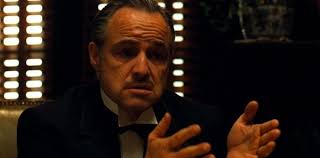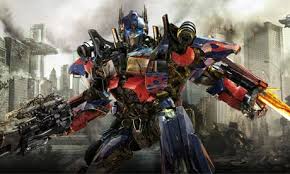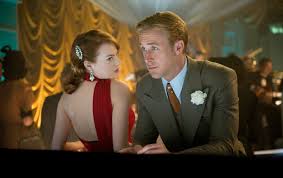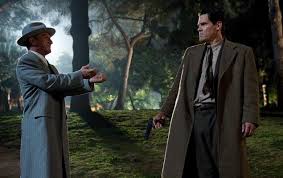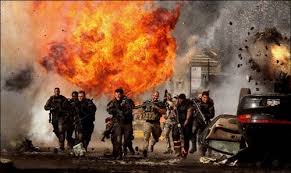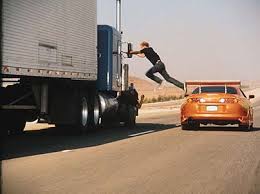Wednesday 11 December 2013
Tuesday 10 December 2013
Monday 2 December 2013
Achievable Sequences to Make
Realistically, I am not going to be able to recreate a sequence from Avatar - and at the same time I don't want to sell myself short by shooting something too easy; but most importantly it needs to meet what the audience demands. I gathered from my research that Action, Crime & Thriller are popular genres and that it would be a good idea to stick to a sequence which involves one of the three.
Wednesday 27 November 2013
What The Results Are Leading Me To
From the results i can gather that Action, Crime & Gangster are popular genres, i feel that when it is time for me to create my sequence, One of these 3 genres are most likely as it will create a sequence which meets the demands of the audience
Monday 25 November 2013
Colour Schemes in Opening Scenes
It is clear to see straight away that the scene is dark & grey, this brings a eery element to the title sequence. Now we already know that conventions of a horror film are dark ominous scenes, so straight away without the audience knowing what the genre is, they would be able to identify immediately what kind of genre the film is.
I chose a film opening that includes the major horror conventions, the sequence is predominantly silent yet the high pitched stringed instruments helps build tension for the viewers
Wednesday 20 November 2013
Monday 18 November 2013
So we understand some variations in title sequences, but what is the actual definition of a title sequence?
'A title sequence is the method by which films or television programs present their title, key production and cast members, or both, utilizing conceptual visuals and sound. It usually follows but should not be confused with the opening credits, which are generally nothing more than a series of superimposed text' - Art of the Title
Sunday 17 November 2013
Sunday 10 November 2013
Personal Opinion of Se7en Opening
I don’t particularly like this opening title sequence but it has certain elements to it that I found quite interesting. This sequence starts off slow with the sound picking up towards the end when the title of the film is introduced. Every 5 to 7 seconds, there is a black-out where an actor or film crew member is introduced. It’s set in time to the music in the background and the scratchy sound effects that give the sequence an eerie feel to it. It’s slow to draw the audience in and speeds up gradually to keep them engaged. The flicking between the images of the book and the writing to a black screen is quick and not very clear. I feel this is done purposely to mess with the way the audience is thinking. It sets the film up for something psychological or horrific in genre.
I like the inventive use of the font in this title sequence because it looks like someone has drawn on the screen. It makes the audience feel as though they are participating rather than observing. The constant close-ups of the images and the book is also effective in keeping the attention of the audience because they are so close to what’s being shown that they can’t be separated from it. I would like to interpret this aspect of the title sequence into my own. There is an effect that’s been edited into this title sequence which is the overlapping of the film footage. It’s almost like the pages of the book being overlapped.
The colour and lighting in this sequence is a sickly yellow to associate with ageing and perhaps death which is very effective for setting the mood of the film. We get a sense of psychotic behaviour through the crossing out of words and the extreme close-up of the pen and fingers. It’s like the title sequence is drawing us in so close to the action that we can’t look away. It’s a powerful piece that I learnt to respect rather than like.
Catch Me If You Can Mise-en-Scene
Cinematography – Even though there aren't physical camera shots in this sequence, there is a lot of movement that tracks the protagonist. The movement helps represent the main characters determination to not get caught. When the character changes his costume to the pilot, we see this through a close-up, which helps us pay more attention to this transformation. There is a tracking shot when the protagonist is a doctor and when he is when moving up in the lift. This represents that he is 'moving up' and is becoming smarter. However the detective man is already at the top of the building, which also shows how he is more powerful.
Editing – Wipes from one scene to another help the keep the transition smooth. For example the wipe from the airport to the car chase is an airplane flying out of the airport and then flying over the road. The sudden changes in location shows how the film is constantly going to be moving along fast, and how it won’t just be set in one place. Another wipe transition is from the police car chasing the taxi to the swimming pool scene. This is because the taxi wipes across the screen acting as a transition between the shots.
Skyfall Music Analysis
‘Skyfall‘ is a seductive, sleazy ballad about nothing in particular. And yet, it sounds exactly like a Bond song should, which is basically music to have sex to… and then die.
Still, within its lyrical complexities there are hidden themes to pick up on.
Skyfall is where we start
'A thousand miles and poles apart
When worlds collide, and days are dark’
Bond wouldn’t be Bond without exotic locations. Hence, when he’s bedded some poor woman in Japan he’s quickly off to Ecuador to shoot someone in the back of the head. When will you ladies learn, the man is not into long distance relationships?
'This is the end’
Cleverly, this isn’t the end of the song, but the beginning. Of course, The Doors song ‘The End’ opens with the same lyrics, before leading the listener into a trance. Will the same happen here? No.
Wednesday 6 November 2013
Resident Evil Afterlife - Goldfinger Opening Analysis
Resident Evil's Afterlife opening is in someways similar to Goldfinger, but at the same time has many fundamental differences.
For a start the concept of the whole opening for Resident Evil is quite simple, simplified down it is a Japanese lady who turns bad, kills a man and then camera pans out to show the spread of the virus. The fundamental difference being the advances in editing and camera software, Resident Evil's opening is executed exceedingly well, similarly to Goldfinger; using basic camera shots and editing work but to a much higher quality. It is clear to see the intent of director, to show the emotion upon the faces of the woman and man; which i am sure would have been evident in the Goldfinger opening if not for the 45 year gap in technology.
Goldfinger Title Sequence Credits
What Goldfinger lack in complexity, certainly doesn't lack in originality. Goldfinger is my personal favourite opening sequence in the 20th century, along side the original Italian Job.
Movie studios back then didn't have the advanced technology that movie studios have today, improvisation was needed to catch the eye and draw in the audience without the elaborate effects we take for granted today. The best way in which movies of the period did this was via music, it was hints of what the movie held in store for the audience in very clever musical enigma's, which Goldfinger plays on very well. Compared to the editing techniques used today, Goldfinger's opening is basic, at best; and as a result of this for the next post i will be showing the technological advancements in film openings.
Friday 25 October 2013
Italian Job 1969 Opening Scene (2 Minutes)
The setting of the Alps has always been known as a driving hotspot for enthusiasts, the wealthy looking man in the elegant Ferrari are testimony to the roads surrounding the area and set the scene well. The man is dressed in a smart suit signifying his social class, also connoting his social class is the Ferrari he is happily driving along the rural roads of Italy, the car also adds to the man's power.
As he continues to drive, non diegetic music begins to come into play, this music is a slow Italian opera piece suitable to show the relaxed manner this man possess whilst driving his expensive car, he is completely at ease with the world. The singing begins in the music when the production teams names are revealed.
Skyfall Opening Sequence (2 Minutes)
In Skyfall's opening sequence Bond drifts through a watery dreamscape of daggers and guns, encountering faceless, shadowy foes who threaten to overtake him. One of the ideas in the film is about the intelligence service working in the shadows; the idea of being in the shadows and how shadows suggest different things but most obviously be interpreted as intimidating.
Tuesday 22 October 2013
Lord of War Opening Sequence
The opening of Lord of War starts with the beginning of the bullet making process, it follows the bullet going through various cutting machines, being re moulded into a hollow casing then filled with gun powder; the camera cleverly follows this entire process from pretty much the bullets perspective. The bullets are then sorted and filtered, checking for duds then packaged up. The destination for the crates is not known however a good guess can be make that it is an African nation. The camera continues to follow the bullets on their journey to the point of being loaded into a gun, and fired, rather disturbingly into what appears to be a child's head. This is where the opening scene cuts to a blank screen, leading into the rest of the film.
Subscribe to:
Posts (Atom)
